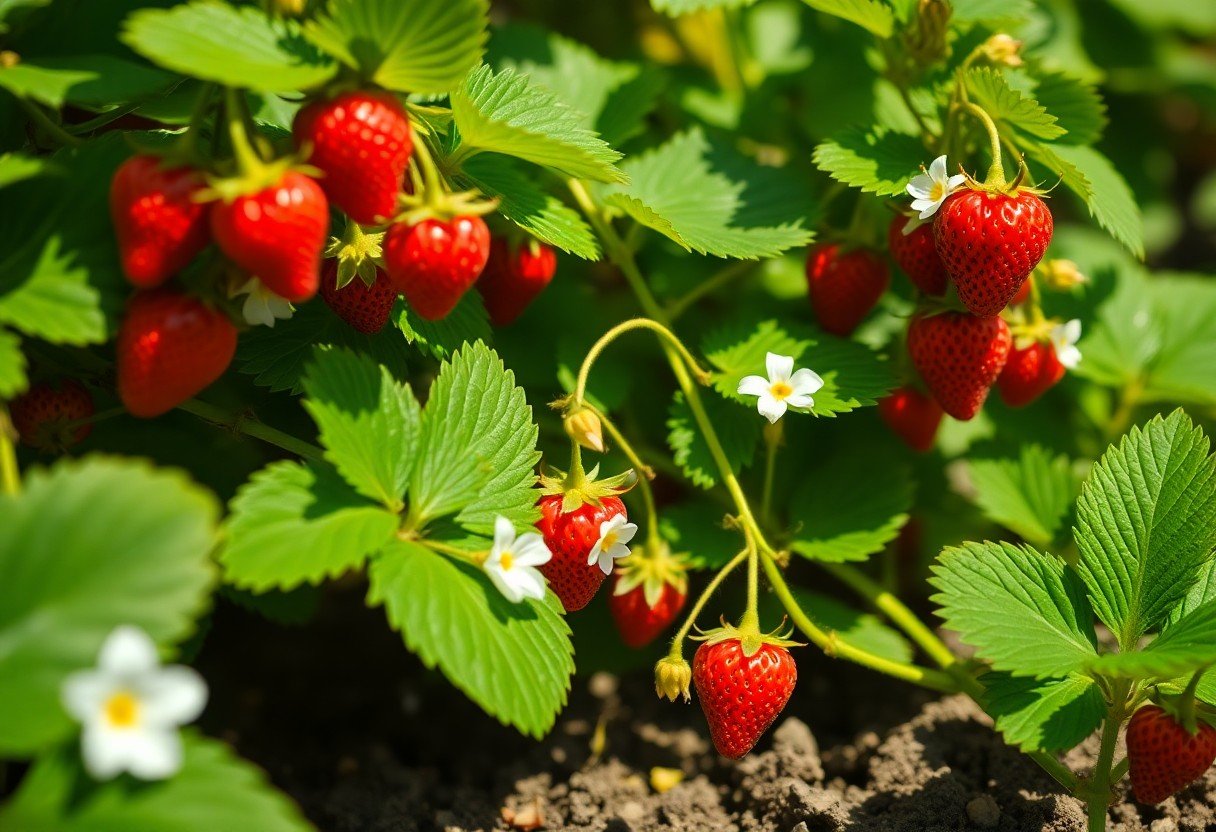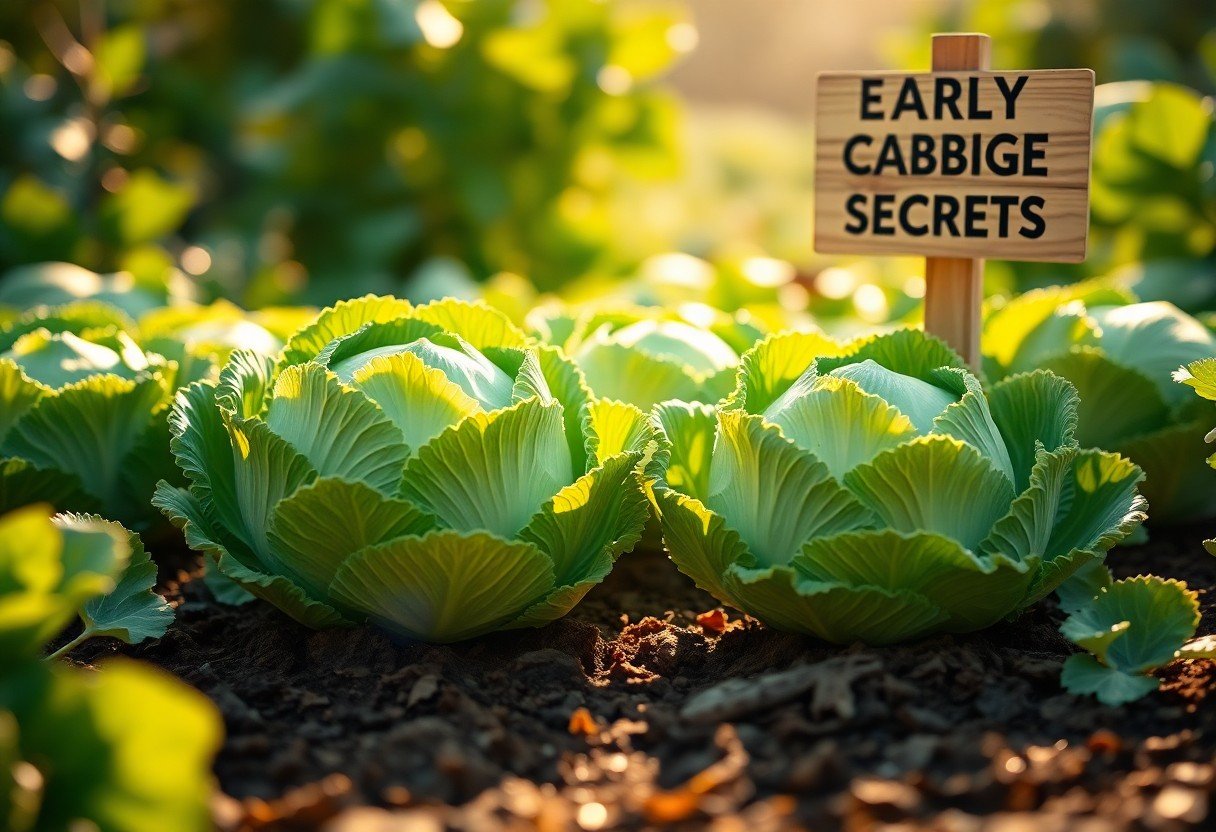Calendula, also known as pot marigold, is a vibrant and versatile flower that can brighten up your garden and uplift your spirits. In this guide, you will learn the importants of cultivating these cheerful blooms, from selecting the right seeds to nurturing them for optimal growth. You’ll discover practical tips and creative ways to incorporate calendula into your home and wellness routine. Get ready to embrace the joy and benefits that come with growing these delightful flowers!
Key Takeaways:
- Calendula, also known as pot marigold, thrives in well-drained soil and requires full sun exposure for optimal growth and blooming.
- Regular deadheading encourages prolonged flowering and ensures the plants maintain a vibrant appearance throughout the season.
- Calendula petals are edible and can be used in salads, teas, or as a natural dye, enhancing both culinary and aesthetic experiences.
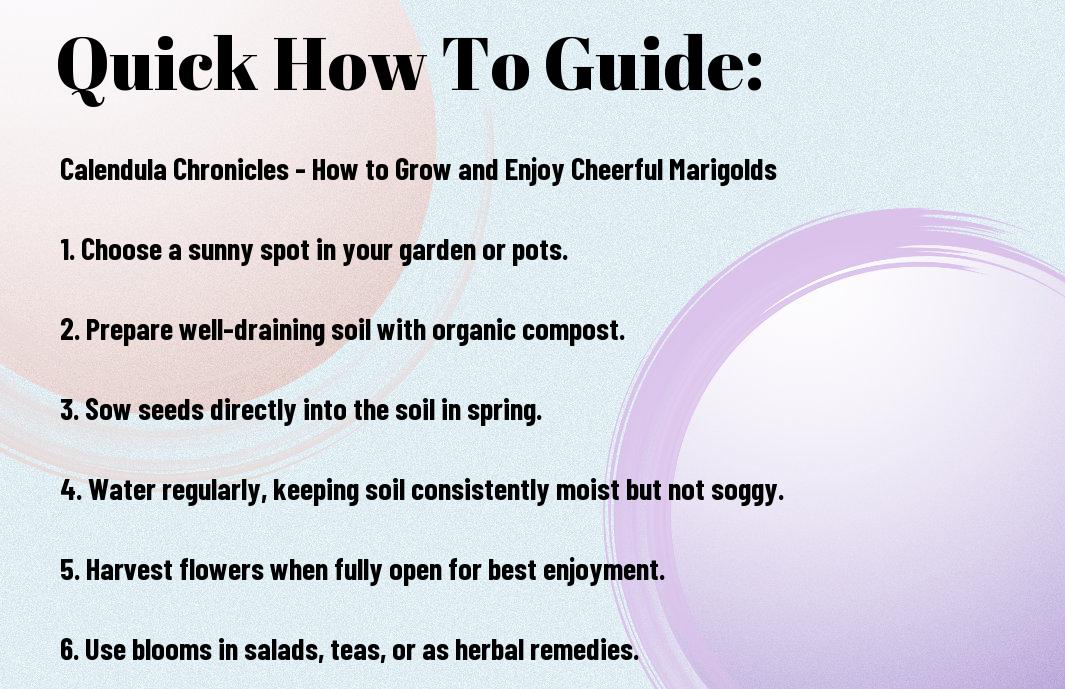
Understanding Calendula
As you investigate into the world of Calendula, you’ll discover its fascinating history and significance in gardening and herbal practices.
History of Calendula
Even in ancient times, Calendula was revered for its medicinal properties and ornamental beauty. Ancient Egyptians, Greeks, and Romans utilized marigolds for various therapeutic purposes, believing in their ability to promote healing and ward off evil spirits. Over the centuries, these vibrant flowers have become a beloved staple in gardens worldwide, celebrated for their cheerful appearance and beneficial uses.
Botany of Marigolds
Calendula, commonly known as pot marigold, belongs to the Asteraceae family. With its bright orange, yellow, or white blooms, this hardy annual exhibits a thick, hairy stem and serrated leaves. The flower heads consist of both ray and disc florets, attracting pollinators to your garden. Their adaptability to various soil types makes them a favorite choice for both beginner and experienced gardeners.
Marigolds are not only aesthetically pleasing but also serve multiple ecological functions. You may find them thriving in your garden from early spring until frost, providing continuous color. Their blooms can reach up to 3 inches in diameter, and they vary in height from 12 to 24 inches, making them suitable for borders or as vibrant cut flowers. Their ability to self-seed means you could enjoy a returning display season after season.
Common Varieties and Their Uses
While many varieties of Calendula exist, some of the most popular include Calendula officinalis, which is known for its medicinal benefits, and Calendula ‘Field of Gold’, valued for its bright golden blooms. These types can be used in herbal remedies, culinary dishes, and even skincare products due to their soothing properties.
Calendula’s versatility extends to its culinary uses as well. You can incorporate its petals in salads, teas, or as a garnish to add color and flavor. Additionally, the flowers are frequently used to make infused oils and ointments, thanks to their anti-inflammatory and antimicrobial qualities, making it a valuable addition to your home apothecary.
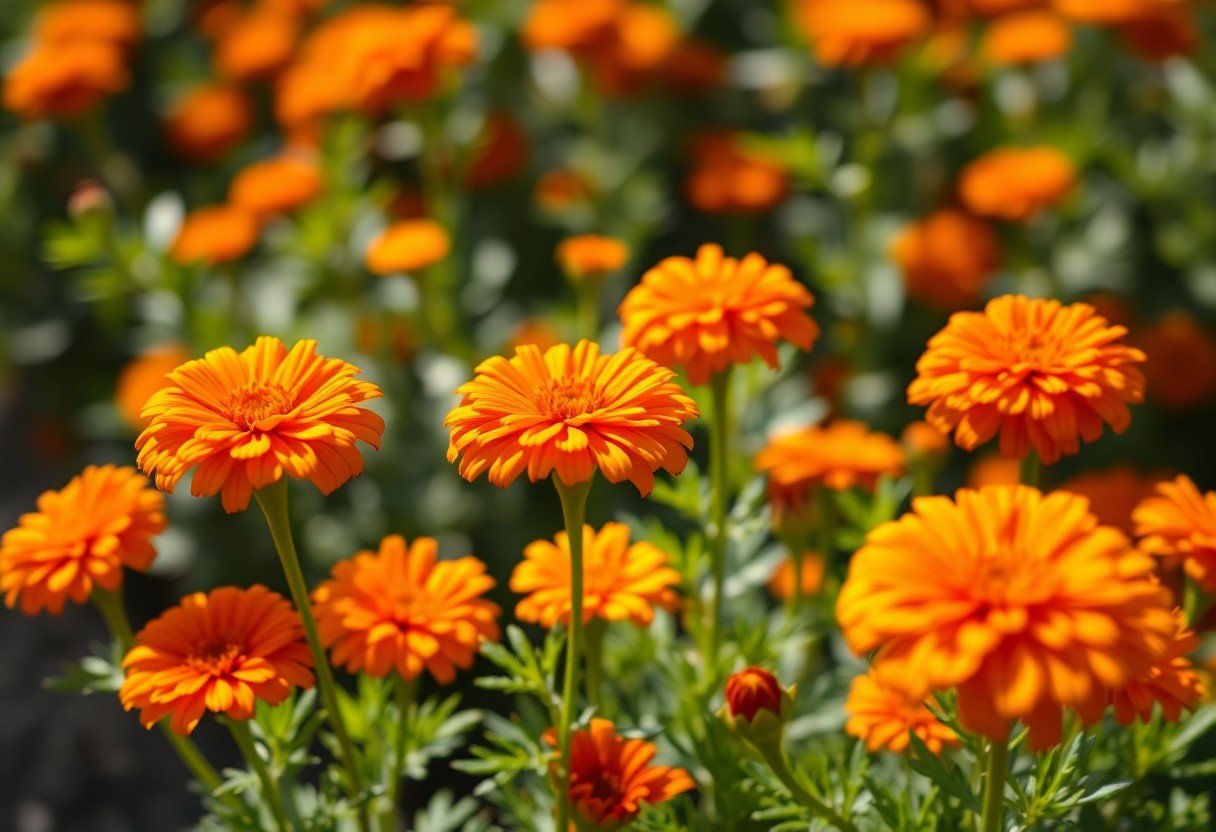
Factors Influencing Growth
Now, let’s explore the key factors that play a significant role in the growth of your cheerful marigolds. By understanding these elements, you can provide the optimal conditions for your plants to thrive:
- Climate and Weather Conditions
- Soil Composition
- Watering Needs
- Sunlight Exposure
The right conditions impact your marigolds’ health and vigor.
Climate and Weather Conditions
While calendula thrives in moderate temperatures, it is important to pay attention to drastic weather changes. Ideal growth occurs in temperatures between 60°F and 70°F (15°C to 21°C). Too much heat or frost can stunt your plants’ growth or even kill them, so keeping an eye on forecasts is imperative.
Soil Composition
Climate plays an important role in determining the type of soil that will support your marigolds. Well-draining soil ensures that excess moisture doesn’t harm the roots, while organic matter enhances nutrient content, promoting healthier growth.
It is advisable to amend your soil with compost or aged manure to improve its structure. This boost not only retains moisture but also enriches your calendula with imperative nutrients, fostering robust and vibrant blooms.
Watering Needs
Influencing the overall health and appearance of your marigolds, proper watering is imperative. It’s best to water consistently, ensuring the soil remains evenly moist but not waterlogged, as this can encourage rot.
Growth can be affected severely if your marigolds experience too little or too much water. To avoid common issues, aim to check the soil moisture regularly and adjust your watering schedule according to weather patterns and changes in humidity.
Sunlight Exposure
Conditions for optimal growth must include adequate sunlight. Your cheerful marigolds prefer full sun, requiring at least six hours of direct sunlight each day to flourish and produce abundant blooms.
Factors influencing your marigolds’ performance include the location you choose for planting. If they do not receive sufficient sunlight, you’ll notice stunted growth and limited flowering, so select a bright spot in your garden for their best development.
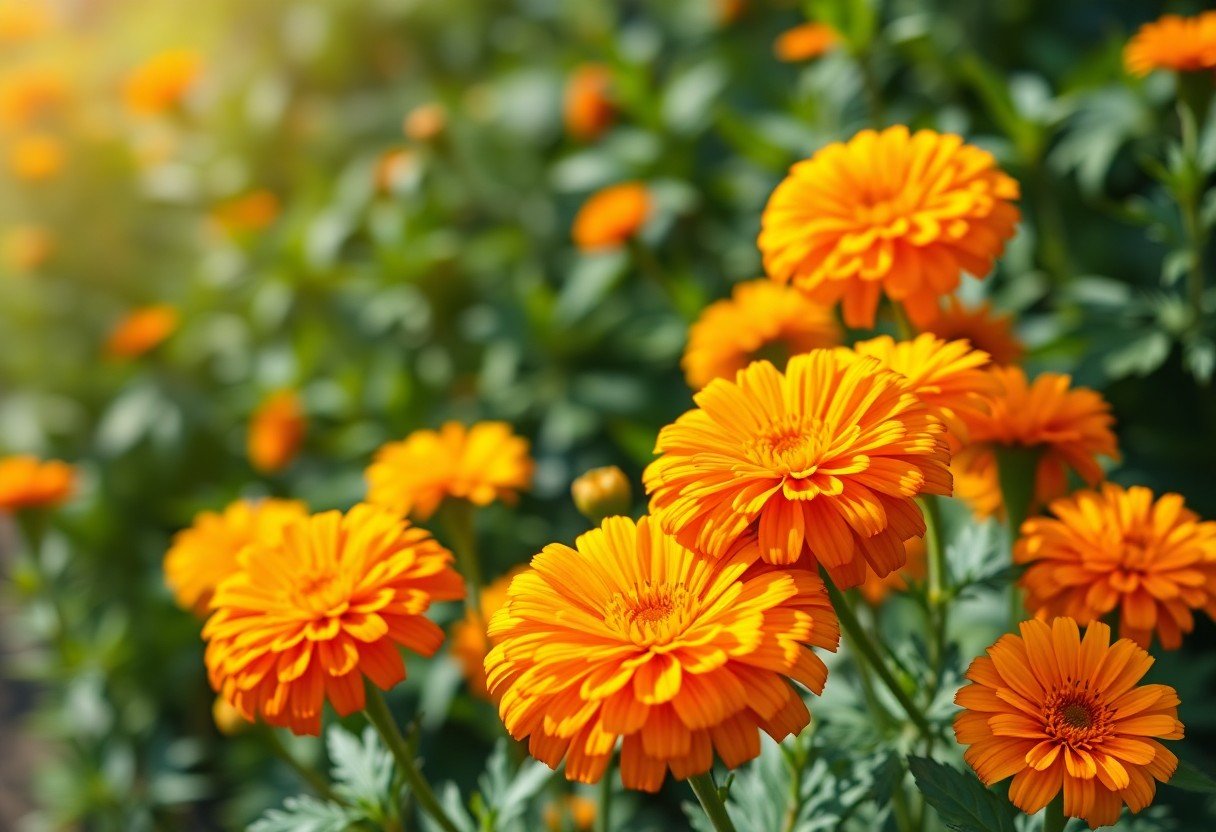
How to Plant Calendula
Despite their cheerful disposition, growing calendula requires some know-how to ensure these vibrant flowers thrive in your garden. From selecting a proper location to the actual planting process, following these steps will help you cultivate a beautiful patch of marigolds.
Choosing the Right Location
The ideal spot for calendula is one that receives plenty of sunlight, ideally at least 6 hours a day. Make sure the area is well-drained and protected from harsh winds, as these flowers thrive best in a nurturing environment.
Preparing the Soil
Calendula prefers nutrient-rich soil that is well-draining. Start by loosening the soil to a depth of at least 12 inches and mixing in organic matter, such as compost, to enrich it. Ensuring good drainage helps prevent root rot and keeps your plants healthy.
Another aspect of preparing the soil is testing its pH, ideally between 6.0 and 7.0. If needed, you can amend the soil with lime to raise the pH, or sulfur to decrease it. By creating an optimal growing environment, your calendula plants will flourish and produce bright blossoms.
Sowing Seeds vs. Transplanting Seedlings
Soil temperature and your gardening timeframe will influence whether you choose to sow seeds directly or transplant seedlings. Sowing seeds is more straightforward, while transplanting seedlings can give you a head start if you’re working with limited time.
Transplanting seedlings can yield quicker results since they are already established. However, you should handle the seedlings with care to avoid damaging their roots. If you’re starting from seed, be mindful of the local climate to ensure the best success with germination.
Ideal Planting Times
Soil temperature plays a significant role in determining the best time to plant calendula. Generally, you should plant them in early spring or late summer, depending on your specific climate zone.
It is advisable to wait until the risk of frost has passed before planting in spring. If you’re sowing seeds for a fall harvest, aim for about 8 to 10 weeks before the first expected frost. This timing allows the plants to establish and bloom beautifully in your garden.
Care and Maintenance
Unlike many flowering plants, calendulas are relatively low-maintenance once established. However, providing the right care will keep your cheerful marigolds vibrant and thriving throughout the season.
Fertilization Tips
Care for your calendula by using a balanced, water-soluble fertilizer once a month. Focus on these tips for optimal growth:
- Choose a fertilizer with equal nitrogen, phosphorus, and potassium ratios.
- Apply it during the growing season when blooms are most abundant.
- Water your plants well after fertilizing to help nutrients absorb.
Recognizing when your plants are nutrient-deficient can enhance their blooming performance.
Pest Management Strategies
An effective approach to pest management involves regular monitoring and proactive measures. Implement the following strategies to keep unwanted pests at bay.
Maintenance also plays a significant role in safeguarding your calendulas. You can easily deter pests by introducing beneficial insects like ladybugs and lacewings, which naturally eat aphids and other harmful pests. Additionally, consider using insecticidal soap or neem oil for any infestations. Identifying the right approach for your garden will ensure your marigolds remain healthy and beautiful.
Pruning and Deadheading
While calendulas can flourish without much pruning, taking the time to deadhead spent blooms encourages new flower production and keeps your plants looking tidy.
Regularly snipping off faded flowers not only promotes a longer blooming period but also prevents self-seeding, allowing you to maintain control over your garden. This simple practice enriches the visual appeal of your marigolds while supporting their overall health.
When and How to Harvest
Tips for harvesting calendula blossoms include picking flowers in the morning after the dew has dried. This is when the petals are at their most vibrant and aromatic.
To ensure you’re harvesting the best blooms, it’s ideal to gather flowers just as they begin to open, which guarantees optimal color and fragrance. You can also pinch off leaves and stems, using them in salads or DIY skincare products. Following these simple harvesting techniques will ensure you benefit from your marigolds both in the garden and beyond.
Creative Ways to Enjoy Calendula
After nurturing your cheerful marigolds, it’s time to explore the many ways you can enjoy them beyond their vibrant beauty. From delightful culinary creations to therapeutic applications and artistic endeavors, calendula blossoms offer numerous opportunities for creativity and wellness.
Culinary Uses
Culinary enthusiasts often turn to calendula petals for adding a splash of color and a hint of tang to their dishes. You can use these vibrant flowers in salads, soups, or as a garnish for main courses. Their slightly spicy, peppery flavor can enhance a variety of culinary creations, making them a delightful addition to your kitchen.
Medicinal Applications
Calendula is not just beautiful; it boasts remarkable medicinal properties. Known for its anti-inflammatory and antiseptic qualities, you can use calendula-infused oils or salves to soothe skin irritations, minor cuts, and burns. Its healing abilities make it a fantastic option for those seeking natural remedies in their wellness routine.
A common method of harnessing these benefits is by creating a calendula-infused oil. You can do this by infusing dried calendula petals in a carrier oil like olive or sweet almond oil for several weeks, resulting in a nourishing oil perfect for skin care applications.
Crafting with Calendula
Calendula’s vibrant colors and lovely texture make it an excellent choice for crafting. You can use dried petals in a variety of DIY projects, such as homemade soaps, candles, or even potpourri. Their natural hue adds a cheerful touch to your creations, infusing them with a sense of warmth and beauty.
Another creative approach is to use the petals in homemade paper. By blending them into the pulp, you can craft unique cards or notes that not only look stunning but carry the essence of nature with them.
Aesthetic Arrangements
Culinary arrangements featuring calendula can transform simple dishes into vibrant masterpieces. The bright flowers add an appealing contrast and can elevate your plating game when entertaining guests or enjoying a meal. Their form and color shimmer with life, making everyday meals feel special.
Enjoy incorporating marigolds into your aesthetic arrangements by using them as centerpieces or simple garnishes. Their sunny disposition will uplift your environment, ensuring that every meal or gathering exudes a cheerful ambiance. Whether it’s a festive occasion or a casual dinner, calendula will undoubtedly brighten the table and your spirits.
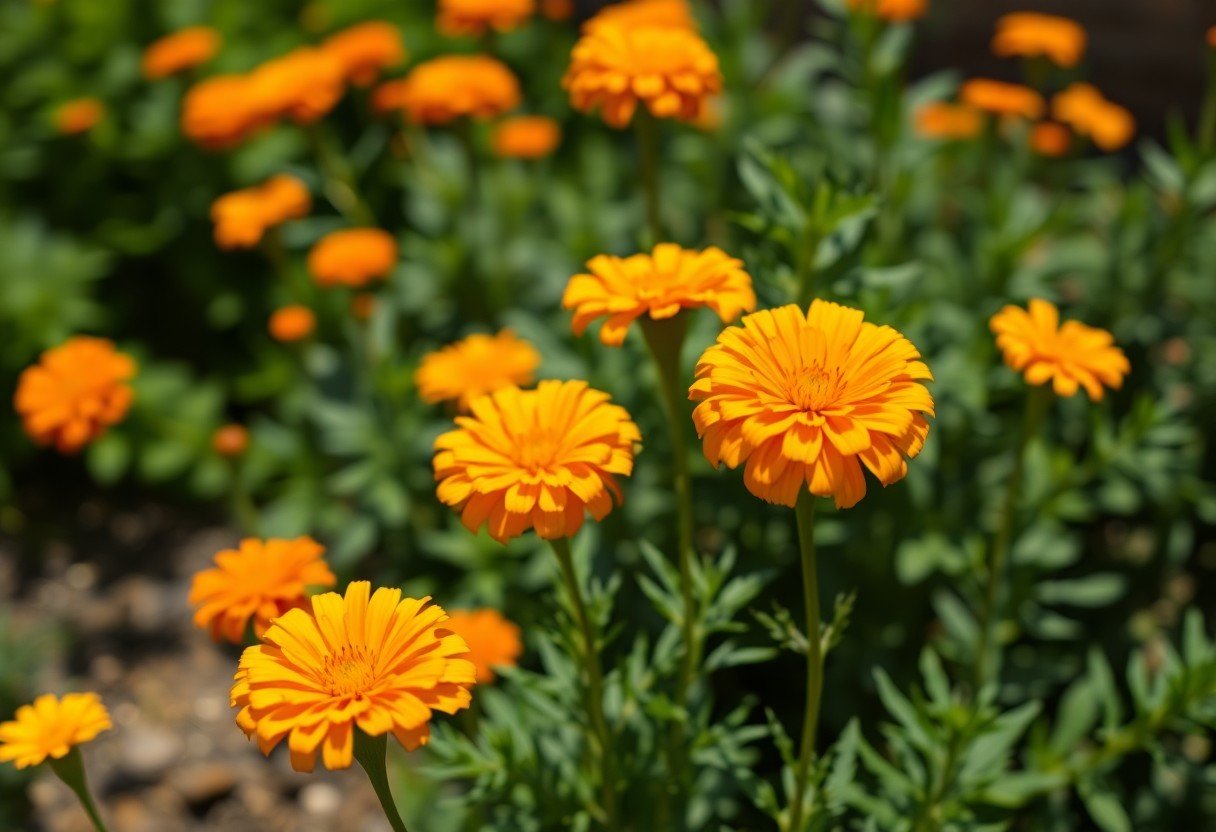
Common Challenges and Solutions
Keep your marigold garden thriving by understanding the common challenges you may face and how to tackle them effectively.
Dealing with Pests and Diseases
With proper monitoring and timely intervention, you can manage pests like aphids and spider mites, as well as diseases like powdery mildew. Introduce beneficial insects like ladybugs, or use organic insecticidal soap to protect your cheerful blooms.
Addressing Environmental Stress
Little changes in temperature, light, or moisture can affect your marigolds’ health. Ensure they receive adequate sunlight—at least six hours a day—and water them deeply but infrequently to prevent stress from drought or over-watering.
Common environmental stressors include inconsistent watering and sudden temperature shifts. Keep a schedule for watering your plants and protect them from extreme weather conditions. Providing mulch can help regulate soil temperature and retain moisture, giving your marigolds a fighting chance against fluctuating climates.
Troubleshooting Growth Issues
Assuming your marigolds aren’t thriving, check their soil quality, light exposure, and watering habits. Sometimes, imbalances in nutrients or poor drainage can hinder their growth, so amendments can help restore vigor.
Dealing with growth issues often requires a thorough inspection of your plants’ surroundings. Assess the soil for compactness, ensuring it drains properly, and consider testing its nutrient levels. Adjust your fertilization routine as needed, and be open to relocating your plants if they aren’t receiving enough sunlight for optimal growth.
Conclusion
Ultimately, by following the tips and techniques outlined in the Calendula Chronicles, you can successfully grow and enjoy these cheerful marigolds in your garden. With their vibrant colors and beneficial properties, calendula flowers not only enhance your landscape but also provide culinary and medicinal uses. Embrace the joy of nurturing these resilient plants, and watch as they bring beauty and utility to your outdoor space. Happy gardening!
FAQ
Q: What are the ideal growing conditions for Calendula?
A: Calendula thrives in full sun or partial shade, preferring well-drained soil that is rich in organic matter. It flourishes in temperatures ranging from 60°F to 70°F (15°C to 24°C). To prepare your garden bed, mix in compost or aged manure to enhance soil fertility. Additionally, ensure adequate spacing between plants to promote airflow and minimize the risk of fungal diseases.
Q: How can I propagate Calendula from seed?
A: Propagating Calendula from seed is straightforward. Start by sowing seeds directly into the garden or in seed trays indoors about 6-8 weeks before the last frost. Plant the seeds about 1/4 inch deep and space them around 12 inches apart for optimal growth. Keep the soil moist and warm until germination occurs, which typically takes 7-14 days. Once seedlings are established, thin out weaker plants to maintain healthy growth.
Q: What are the benefits of using Calendula in my garden?
A: Calendula is not only aesthetically pleasing but also offers multiple benefits. Its vibrant flowers attract beneficial pollinators, such as bees and butterflies, which can enhance the overall health of your garden. Additionally, it serves as a natural pest deterrent, repelling harmful insects such as aphids and nematodes. Furthermore, Calendula’s petals are edible and can be used in salads, teas, and as a natural dye, making it a versatile addition to your garden.




